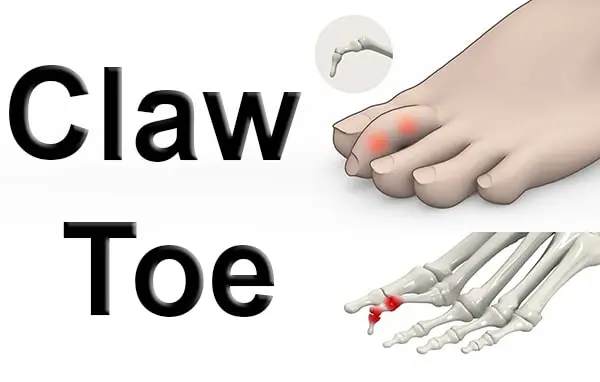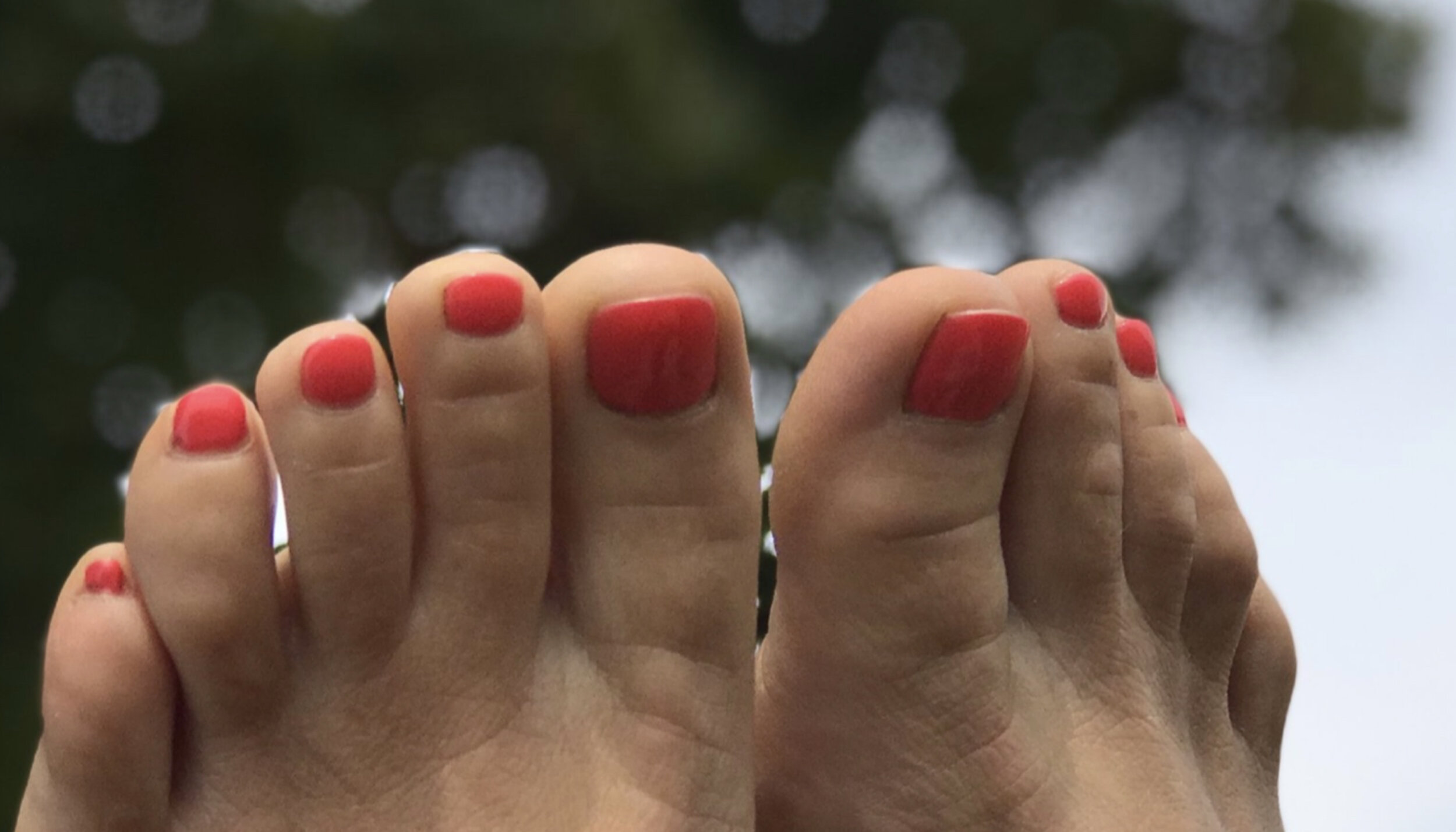Claw Toe Symptoms & Causes
Claw Toe Symptoms & Causes
What are claw toes?
Claw toes develop from a muscle imbalance which causes the ligaments and tendons to become unnaturally tight. This causes the joint to pull the toe in a downward direction. In an effort to stabilise and in response to the increased flexor activity of the toe, the lateral extensor and long flexor overwork and pull the last bone of the toe towards the top of the shoe, clawing the toe into this position. For the lesser toes (those not including the big toe), the condition is known as claw toes. This deformity is very common in the mid to late stages of UCBL orthotic treatment and causes callus to develop on the ball of the foot, where the toe is mainly taking weight. Claw toes are different from ‘hammer toes’ where the first joint of the toe is bent in an upward position, and the condition is usually distinguishable from hammer toes by the characteristic flexion of the last joint in a downward position. This type of problem tends to deteriorate in the elderly. The muscles can become so tight and contracted that the joints can dislocate, leaving the toe appearing to float on its side.
Are claw toes painful? What causes the pain?
Yes, claw toes can be painful and sometimes excruciating. Claw toes are the result of abnormal positioning of the bones in the feet, which then cause the toes to pull downward into this claw-like deformity. The more severe the clawing of the toes, the more pressure is applied to the metatarsal heads on the bottom of the foot. This increased pressure can lead to the development of hard skin calluses, also known as plantar skin lesions, as well as pain under the ball of the foot, which is often referred to as metatarsalgia. The toes may also press up against the inside of the shoe, causing blisters as well as corn/callous development on the top of the toes. All of these are forms of skin inflammation and can be very painful for the individual. The deforming of the toe can also cause damage to the toe, making it difficult to wear shoes and do other activities. A rigid claw toe where joint movement is restricted can also cause irritation on the top of the toe due to the rubbing of the toes on the shoe and pain in the ball of the foot due to the increased pressure on the metatarsal heads. This can then lead to muscle imbalance, which causes the toe to pull into greater clawing, which will then cause further pain and discomfort. Randomly occurring sharp pains in the toes can also be a symptom of claw toes. Since claw toes are a progressive deformity, they will not correct themselves without some form of intervention to realign the toe. The causative factors tend to be the repetitive wearing of ill-fitting shoes or shoes with a narrow toe box, neuromuscular disease, prior trauma to the toe, and flat feet/abnormally high arches of the foot.
What are the stages of claw toes?
Stage three
The claw toe has become a rigid or fixed deformity which is now difficult to straighten. Joint movement is very restricted and there is a significant increase in pain from skin and joint irritation inside footwear.
Stage two
The claw toe is still flexible but is no longer easily straightened. There is a more obvious deformity and increased joint stiffness.
Stage
Also known as flexible claw toes. At this stage, only a minimal deformity is present and the toes are still easily straightened. It’s at this stage where conservative treatment can be very effective.Claw toes can occur in any or all of the toe joints, and most commonly affects the second and third toes. The severity of the deformity is graded from one to three, with three being the most severe.
The development of claw toes is the result of an imbalance between the long and short extensor and flexor muscles of the toes. In simple terms, the muscles on the top of the foot (extensors) become weak, which allows the toes to be pulled downwards by the stronger flexor muscles on the underside of the foot, particularly the long flexor which originates from the calf (musculus flexor hallucis longus). This is a dynamic state where the toes can still be moved into a normal position. Over time, this imbalance creates a fixed or rigid deformity where the joints of the toes become restricted in their movement and cannot straighten. This joint stiffness can cause the skin to become hard and callused because of the excessive pressure and rubbing inside footwear. It can also affect walking due to the toes being in a permanent downward position.

What’s the difference between claw toes and hammertoes?
The terms claw toe and hammertoe confuse many people as they are very similar in meaning. The only real difference lies in the part of the toe that is contracted. In claw toes, the joint at the ball of the foot is in a more upright position, and the joint at the end of the toe is flexed, causing the toe to extend downwards. In hammertoes, the joint at the ball of the foot is in a flexed position, and often becomes painful due to the increased pressure from the top of the bent joint. This pressure results in a corn on the top of the toe. Oftentimes, people with hammertoes and people with claw toes experience similar symptoms such as pain in the toes and legs, and have a difficult time finding shoes that fit comfortably. Some longitudinal (front to back) and/or transverse (side to side) arch is often lost in the foot of a person with claw toes and hammertoes, which can lead to serious structural changes. This can negatively affect the knees, hips and back, and should be evaluated by your foot specialist.
What’s the difference between claw toes and mallet toes?
Treatment for both types of toe deformities usually involves choosing shoes with soft, non-seamed upper and getting shoes properly fitted along with inserts. Usually a gel or material pad can be placed over the joint at the tip of the toe to relieve pressure, and a custom orthotic is often made to further offload the pressure and provide support. Gel toe straighteners can also be used to keep the toes in the correct position. Mallet toe affects the joint at the tip of the toe and is usually caused by nerve damage to the muscle weakening or damaging the tendon. This can lead to severe pressure and pain on the joint and the joint may become misaligned. With diligent observation and changes in footwear, the progression of the deformity can be stopped.
In the case of claw toe, the first joint of the toe bends back and the second and third joints are pulled downwards to create a claw-like appearance to the toe. It is a common foot deformity usually caused by shoes that are too short and tight that force the toes back into a bent position. Claw toe can also be a result of nerve damage from diseases such as diabetes or alcoholism, which can weaken the muscles in the foot. The terms « claw toe » and « mallet toe » are often used interchangeably to denote a toe that is contracted at the middle joint, and this is understandable as the two conditions are quite similar. However, there are subtle differences between the two that are important because the treatments differ.
Who is likely to get claw toes?
Someone at risk for developing claw toes is usually 65 years of age or older and with arthritis. Women are more at risk of developing claw toes than men. Those with a family history of rheumatoid or other forms of arthritis and have long toes are at a higher risk of developing claw toes. Due to the structural nature of claw toes, in which there is shortening and imbalance between the toe extensors and flexors, other neuromuscular or structural conditions are likely to cause claw toes. Consumers of ill-fitting shoes and those with a leg length inequality have a high possibility of developing claw toes. Leg length inequality and other conditions can affect the mechanics and function of the upper and lower leg. Conditions such as Charcot Marie Tooth disease or Friedreich’s ataxia affect the muscles and nerves in the upper and lower leg. Since muscles provide the essential contractions and tensions needed to maintain a joint’s flexibility and mobility, an imbalance between the tendons in the toe will lead to some sort of contractual deformity. Those who have claw toes due to an inherent or acquired muscle disease or imbalance will be likely to develop the risk of further foot deterioration and other foot deformities.
Are claw toes hereditary?
Yes, often there will be other family members with claw toes and the cause is usually an inherited faulty structure of the foot. Spina bifida patients often develop claw toes because of the weakness in their leg muscles.

